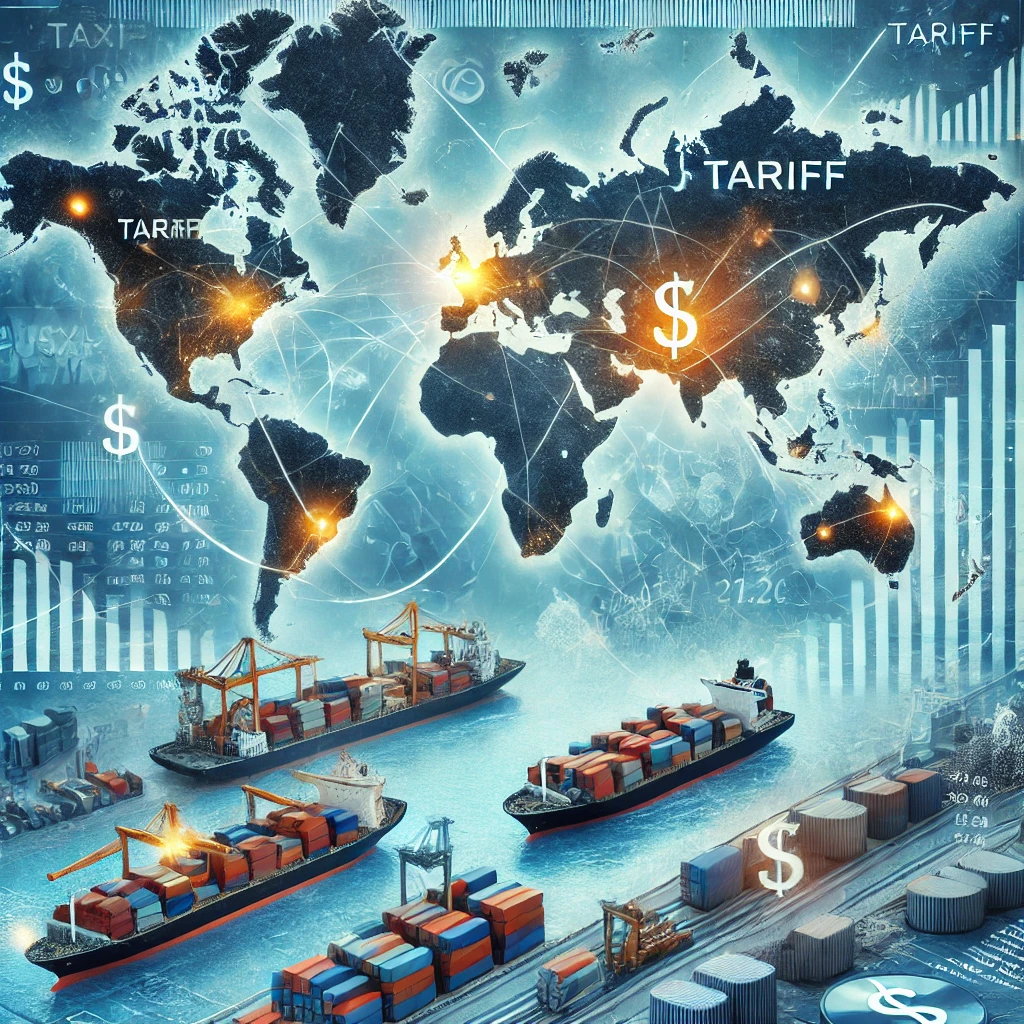🔍 Introduction: The Potential Comeback of Trump’s Trade War

As the 2024 U.S. presidential election approaches, former President Donald Trump has hinted at imposing even tougher tariffs if re-elected in 2025. His previous trade policies (2017–2021) reshaped global economics—what could “Trump Tariffs 2.0” look like?
This in-depth guide covers:
✔ Trump’s proposed 2025 tariff plans
✔ Which industries & countries would be targeted?
✔ Economic & geopolitical consequences
✔ How businesses & consumers could be affected
📜 Trump’s 2025 Tariff Plan: Key Proposals
1. Universal Baseline Tariff on All Imports
- 10% tariff on all foreign goods (up from average 2–3% pre-2018).
- Goal: Force companies to “Make in America” instead of outsourcing.
2. Aggressive China-Specific Tariffs
- 60% or higher tariffs on Chinese goods (vs. 25% in 2018).
- Focus on EVs, semiconductors, and green tech (to counter China’s dominance).
3. “Ringfencing” Key Industries
- Auto Industry: Higher taxes on foreign cars (especially Mexican & EU imports).
- Energy: Penalties on foreign oil & solar panels.
- Tech: Restrictions on Chinese cloud computing & AI firms.
4. Retaliatory Measures Against “Unfair Traders”
- EU: Potential escalation in steel/aluminum disputes.
- India & Vietnam: Crackdown on “tariff evasion” (goods rerouted from China).
🌎 Global Impact: Who Would Be Hit Hardest?
| Country | Likely Tariff Targets | Potential Retaliation |
|---|---|---|
| China | EVs, electronics, batteries | Ban on U.S. agricultural exports |
| Mexico | Cars, auto parts | Taxes on U.S. corn & gas |
| EU | Luxury cars, wine, cheese | New taxes on Big Tech (Apple, Meta) |
| Japan/S. Korea | Steel, semiconductors | Shift supply chains to China |
📊 Economic Consequences: Pros vs. Cons
✅ Potential Benefits
✔ More U.S. factory jobs (if companies relocate production).
✔ Reduced reliance on China for critical goods.
✔ Stronger negotiating power in trade deals.
❌ Major Risks
❌ Higher consumer prices (inflation could spike).
❌ Stock market volatility (trade war fears).
❌ Global supply chain disruptions (like 2018–2020).
💼 Industry-Specific Effects
1. Automotive
- Foreign car prices could surge (Toyota, BMW, etc.).
- Tesla & Ford may benefit from reduced competition.
2. Technology
- iPhone & laptop prices may rise (China-made components taxed).
- Semiconductor shortages possible.
3. Agriculture
- Farmers face retaliation (like China’s 2018 soybean ban).
- Food prices could increase.
4. Energy
- Cheap Chinese solar panels taxed → slower green transition.
- U.S. oil exports may decline if partners retaliate.
🔄 How Biden’s Policies Compare
| Policy | Biden (2021–2024) | Trump 2025 (Projected) |
|---|---|---|
| China Tariffs | Kept most, added tech bans | 60%+ across the board |
| Allies (EU, Mexico) | Negotiated truces | New trade battles expected |
| Domestic Impact | Focus on subsidies (CHIPS Act) | Forced reshoring via tariffs |
🔮 Predictions for 2025 & Beyond
- Short-term pain, long-term uncertainty: Prices may rise before any benefits kick in.
- WTO challenges: Global trade rules could weaken further.
- Supply chain shifts: Companies may leave China—but not necessarily for the U.S.
📌 Key Takeaways
🔹 Trump 2025 tariffs would be broader & harsher than 2018.
🔹 Consumers should prepare for higher prices on imports.
🔹 A full-blown trade war with China is likely.
🔹 Some industries (auto, tech, farming) face major risks.
💬 Your Opinion?
Would you support higher tariffs if it brings back U.S. jobs, or do you think the costs outweigh the benefits? Comment below! 👇
➡️ Follow for more election & economic analysis! 🚀
